“Sometimes people go to extremes and create eccentric, fantastic, obsessive gardens that linger in one’s memory and become tourist meccas.” Diane Ackerman, Cultivating Delight
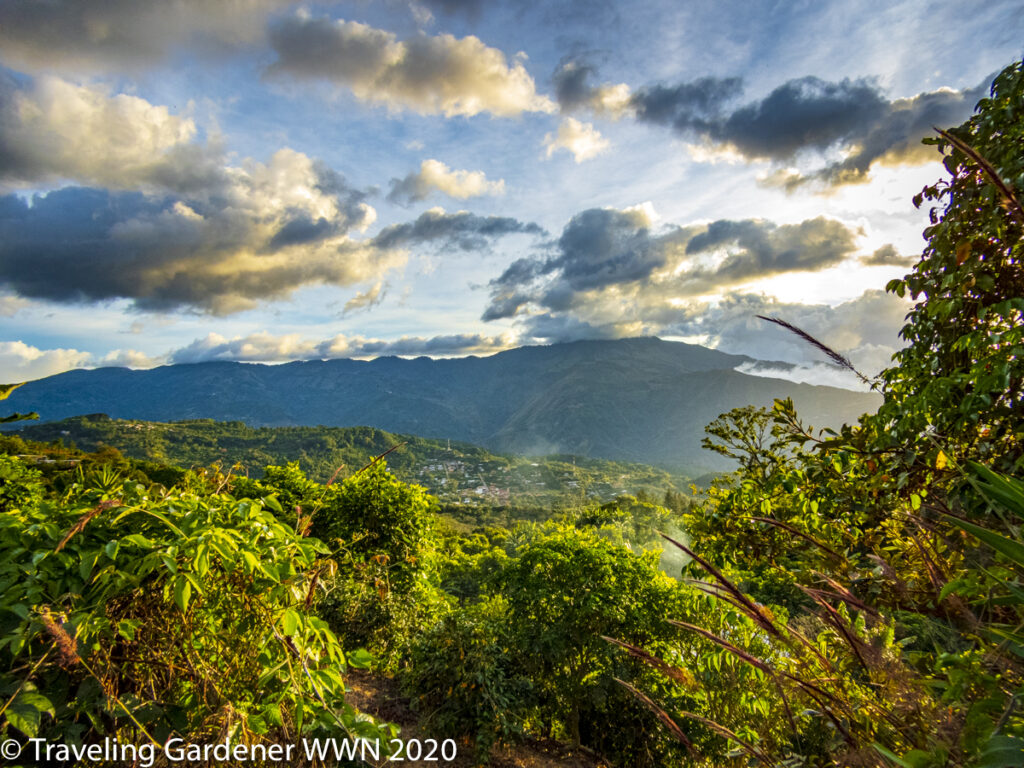
Why do we Garden?
It has been my passion and pleasure to explore gardens everywhere I go, and I’ve seen the grand, the curious, the serious, and the scary. It is a fantastic opportunity to experience remarkable places. Costa Rica is a country so biologically diverse; you could consider the entire country a garden. However, this visit presented me with a reminder of what a garden is meant to do.
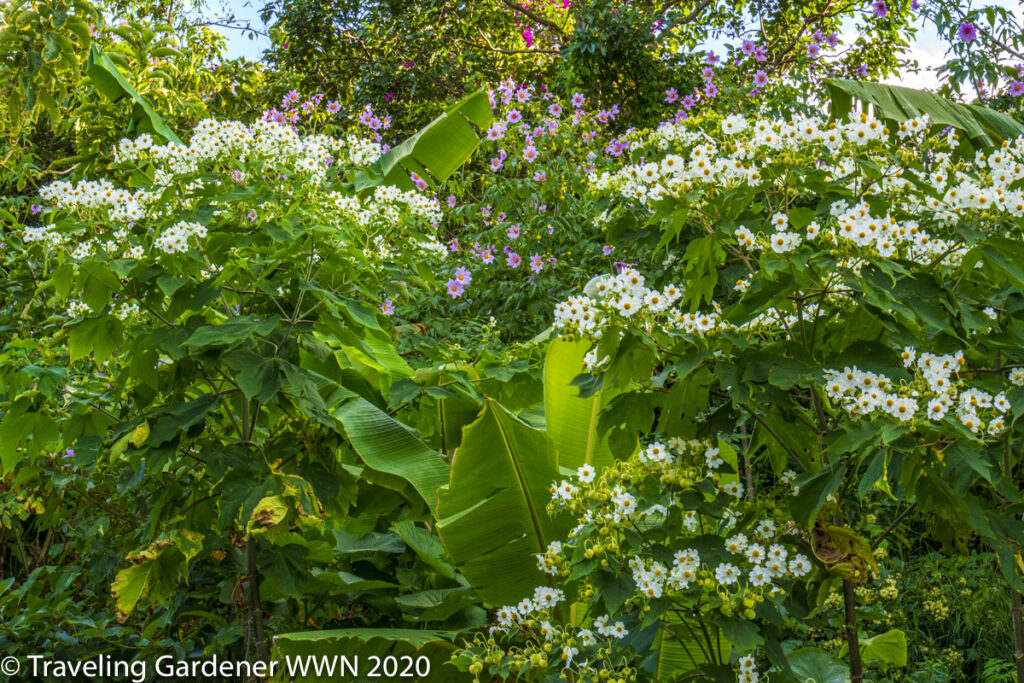
I visited the Jardin Ecologico Los Navarro and Mariposa House (Navarro Ecological Reserve.) I keep a log of all the gardens I have visited, and my visit here in Costa Rica was garden #900. It is one of my most memorable experiences. Everything I learned about this garden was through translation by our guide Henry. I took notes, asked questions, and the following is as accurate as I can be.
This garden is the creation of Grace Navarro, a retired special education teacher and mother of 4 grown children. She retired seven years ago and began working the 2 hectares (just less than 5 acres) of land she inherited from her father on the steep side of a mountain. She is one of 14 children, and her father’s estate was divided evenly between them. She is dedicated to organic gardening and ecological preservation.
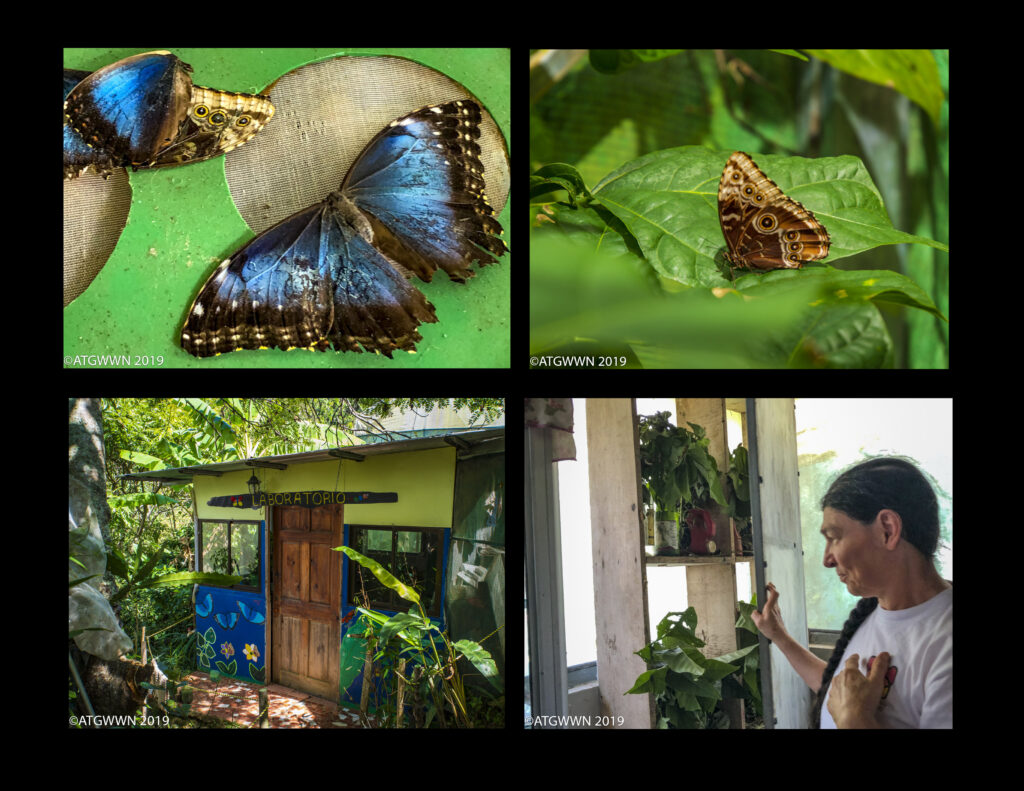
She has a small wooden butterfly house and raises Morpho butterflies – the large busy ones that show bright blue when they fly and then close their wings and show only brown on the outside when they land. Costa Rica grows many butterflies for export for butterfly displays all over the world. Grace raises the Morpho to release into the local community to replenish these essential pollinators. In addition to helping the environment, she wants the community’s children to see this incredible creature in the natural setting where they live. She showed us caterpillars munching on leaves and the nursery for the chrysalis.
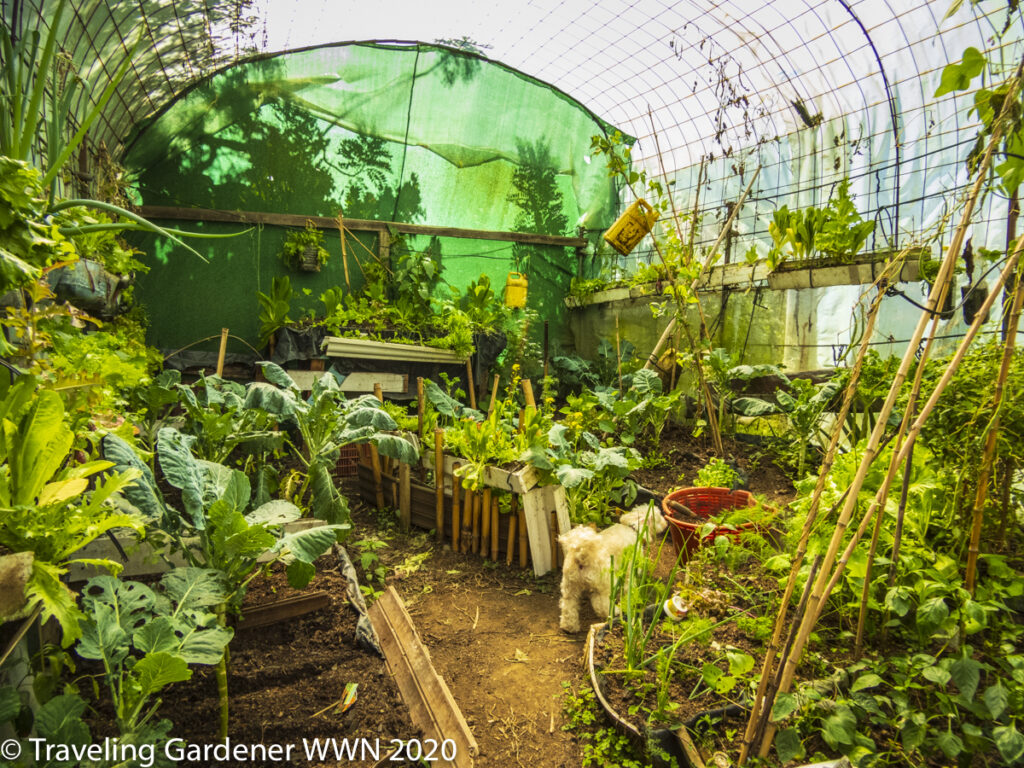
Chickens seem a natural fit for her garden and they are here, but she now grows her lettuces and other greens inside a wooden building to protect them from the hungry fowl.
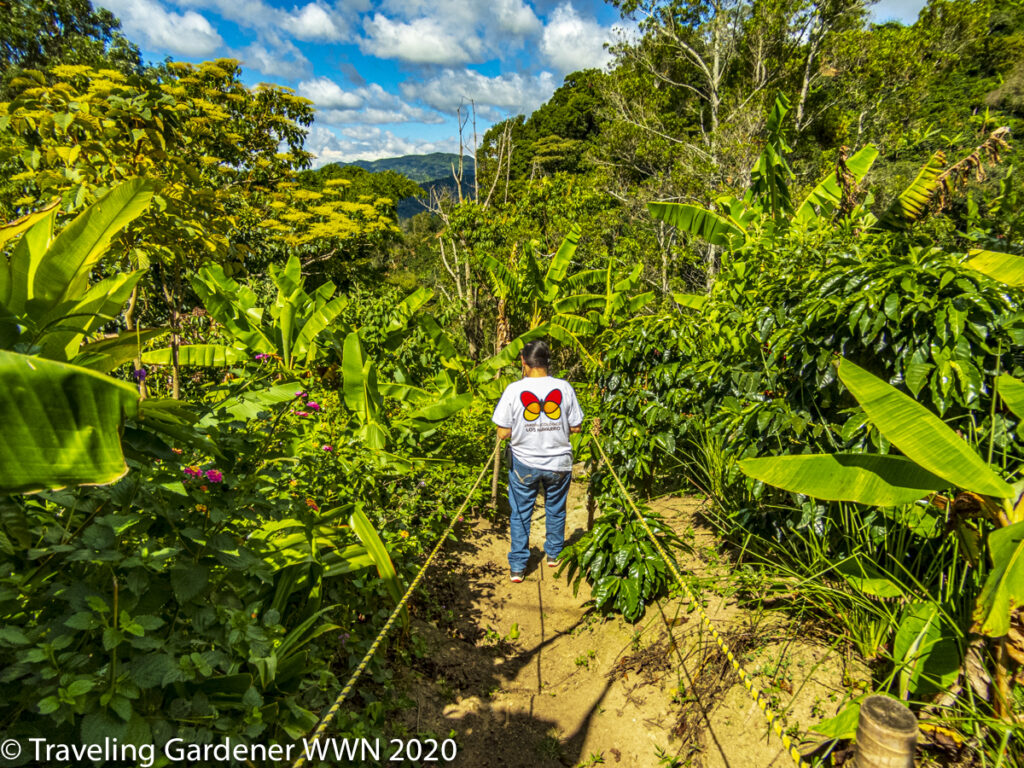
The garden infrastructure is rough. Only thin yellow rope marks the trail edge. When there are steps, they are surprisingly uneven, some small, then giant steps. Many of the steps are cut into the dirt; the concrete steps were rough. Following Grace on a trail, it abruptly ended where heavy rains had caused a landslide, wiping out a stand of coffee plants. She explained the heavy rains of the winter wiped out the section of the coffee and trails. Repairing and replanting are out of reach in the near future.
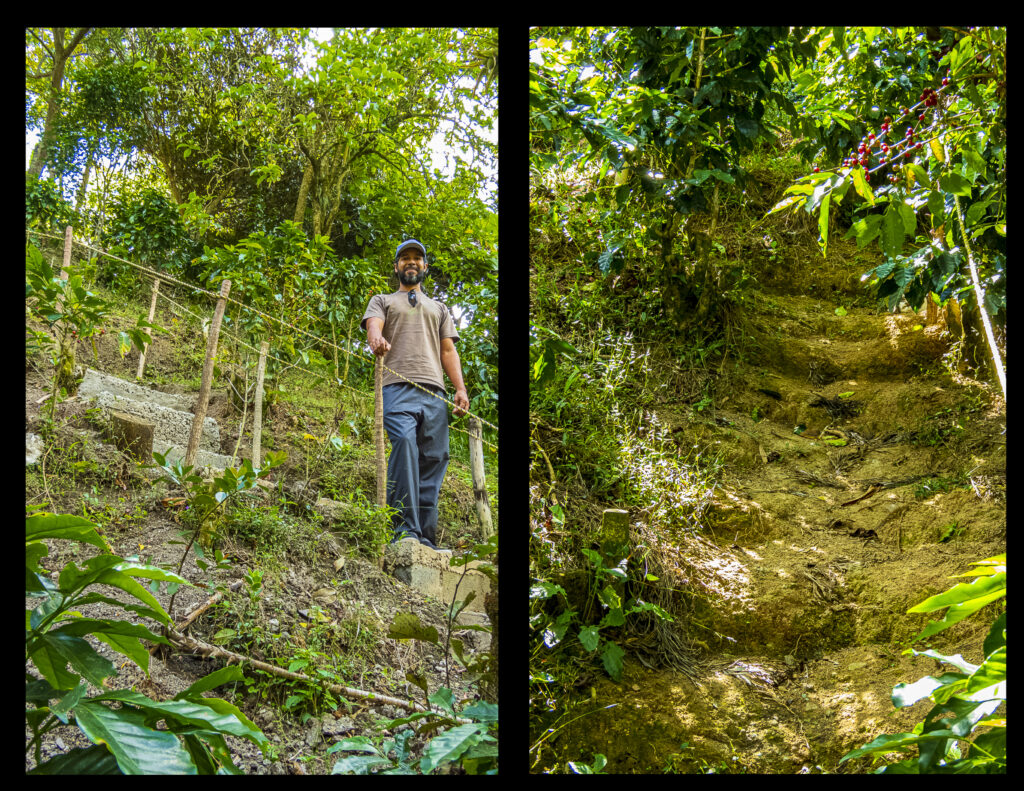
I took every step cautiously while trying to take it all in. The garden was lush green; flowers growing in old tires transformed into planters, plastic two-liter bottles, and coconut shells used for seedlings.
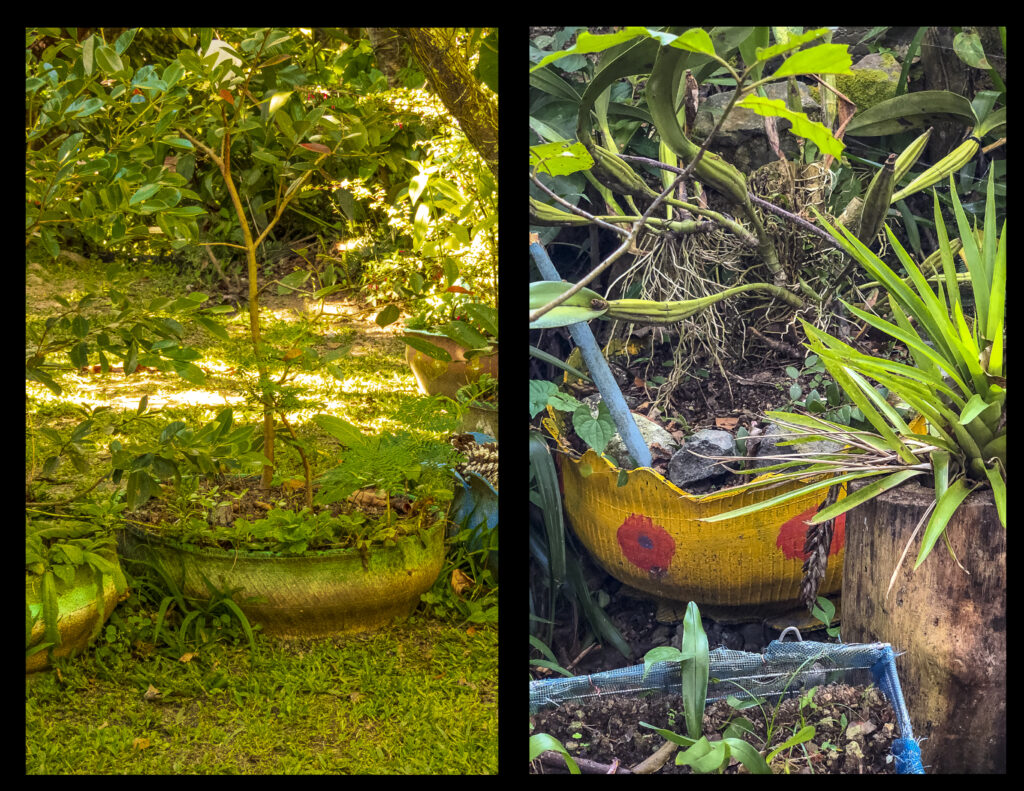
A bromeliad garden features pineapples almost ready to pick. The orchid garden is filled with color. The orchids grew on trees, in crevices, and in pots.
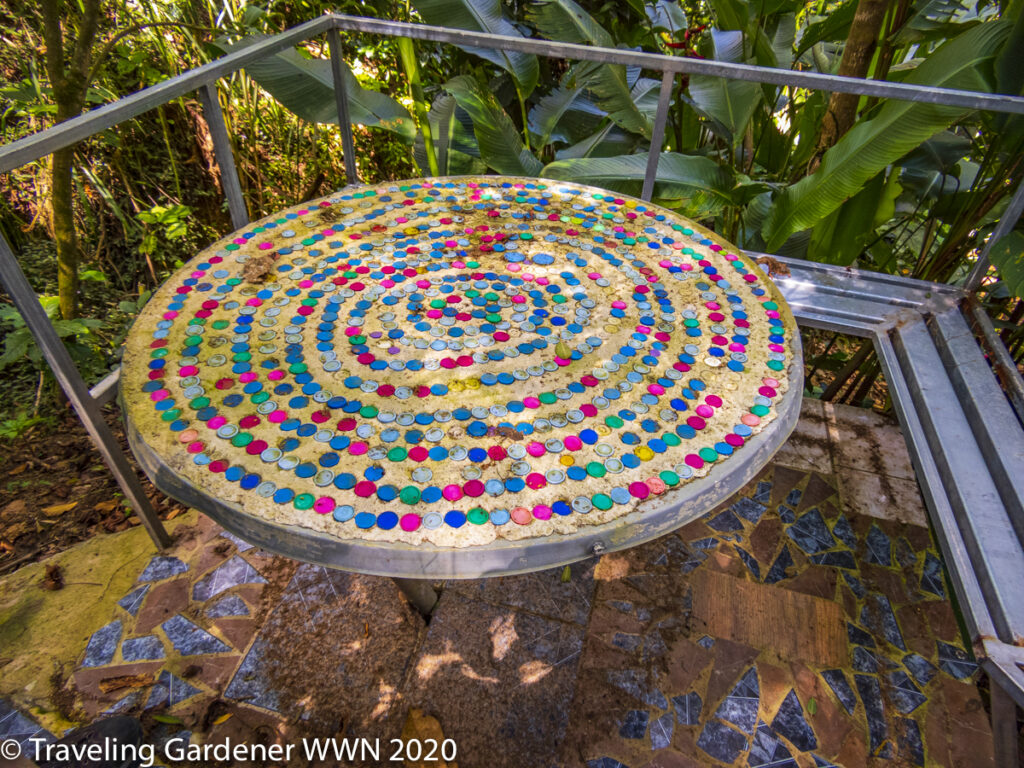
A colorful concrete patio tabletop is embedded with plastic bottle caps. Clearly, nothing goes to waste here.
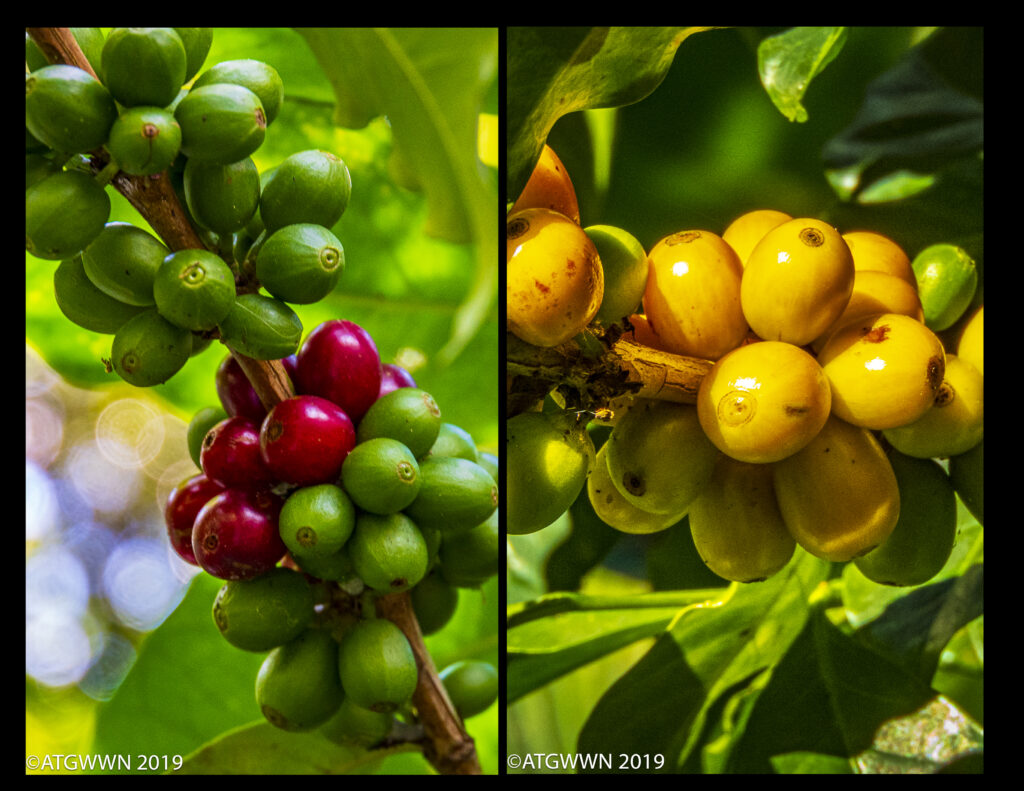
She grows organic coffee the traditional way, she shades her coffee plants under leafy banana trees. The coffee cherries, (she grows both red and yellow), are picked by hand. She hires local laborers, many of them her former students. The coffee is sold under her father’s name, Don Cornelio. The family dries, roasts, and bags it.

Our guide, Henry, told us we would be having coffee in the garden. We had started incredibly early that morning and I was ready for a cup when we arrived. We could smell the coffee roasting. The coffee, in very tiny cups, was served three hours after we arrived.

We were the only guests this day and our visit included lunch. Locally sourced ingredients made for a delicious meal including an omelet on a bed of flavorful rice and beans wrapped and served in a banana leaf. We drank hibiscus tea.
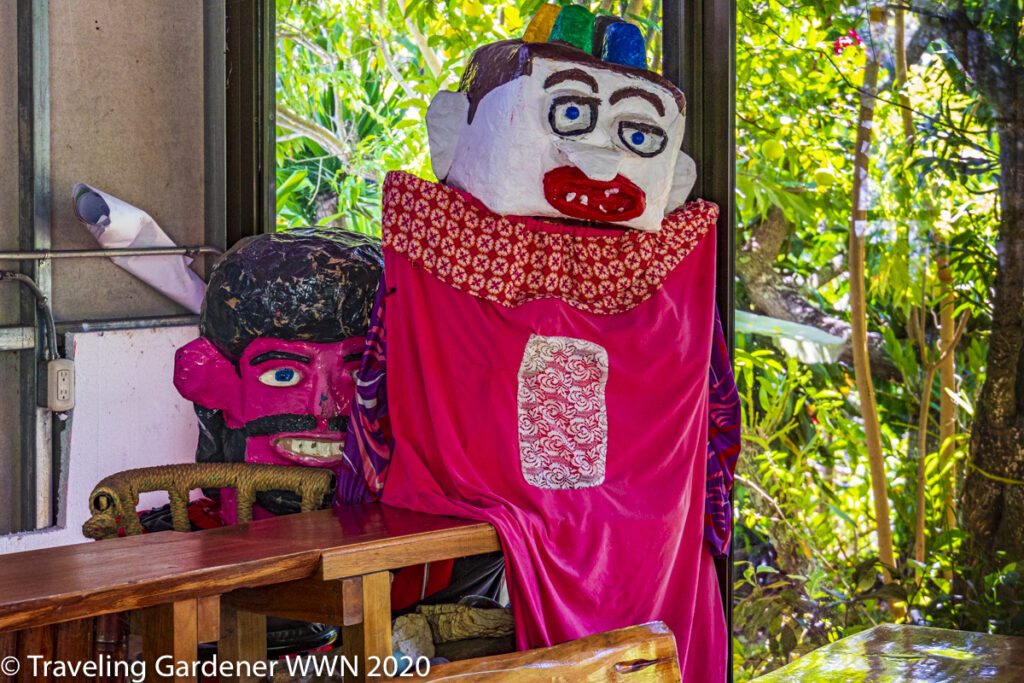
Grace is committed to protecting the local environment and culture. Using the paper bags left from the concrete used in building the garden hardscape, Grace made giant paper-mâché masks and organized a pageant presenting traditional stories to entertain and educate the children when school groups visit. She is providing entertainment, local employment, and economic development in her community.
I’ve seen the royal Gardens of Versailles, the painterly garden of Giverny, and many more. As I first began my visit at Navarro Ecological reserve, I was thinking, “well, this is not for prime-time garden visiting, really not up to my usual garden visiting standards.”
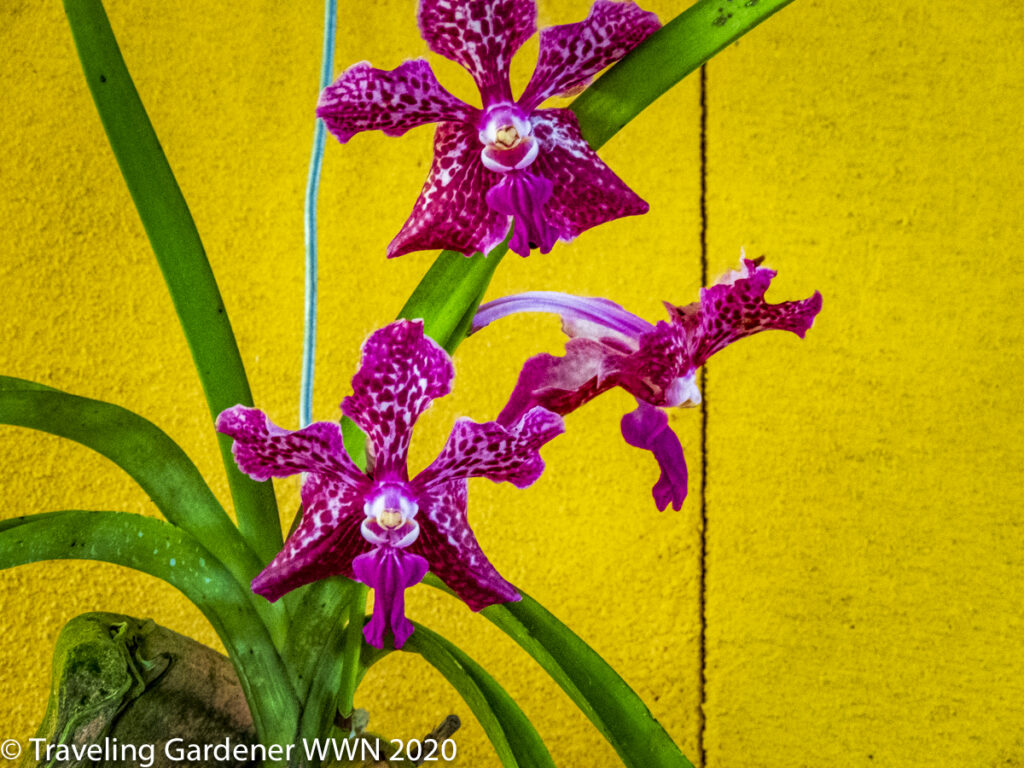
Grace’s garden brought me back to the purpose of gardening. A garden is a human-made space, rearranging nature for the humans that live on the grounds. In the history of gardening, land could not be given over to adding the beauty of a garden until there were more resources beyond the basic survival needs of the people who live on the land. Grace, in her generous heart, has very little to work with but grows her garden, creating her tourist destination to share what abundance she has with her community.
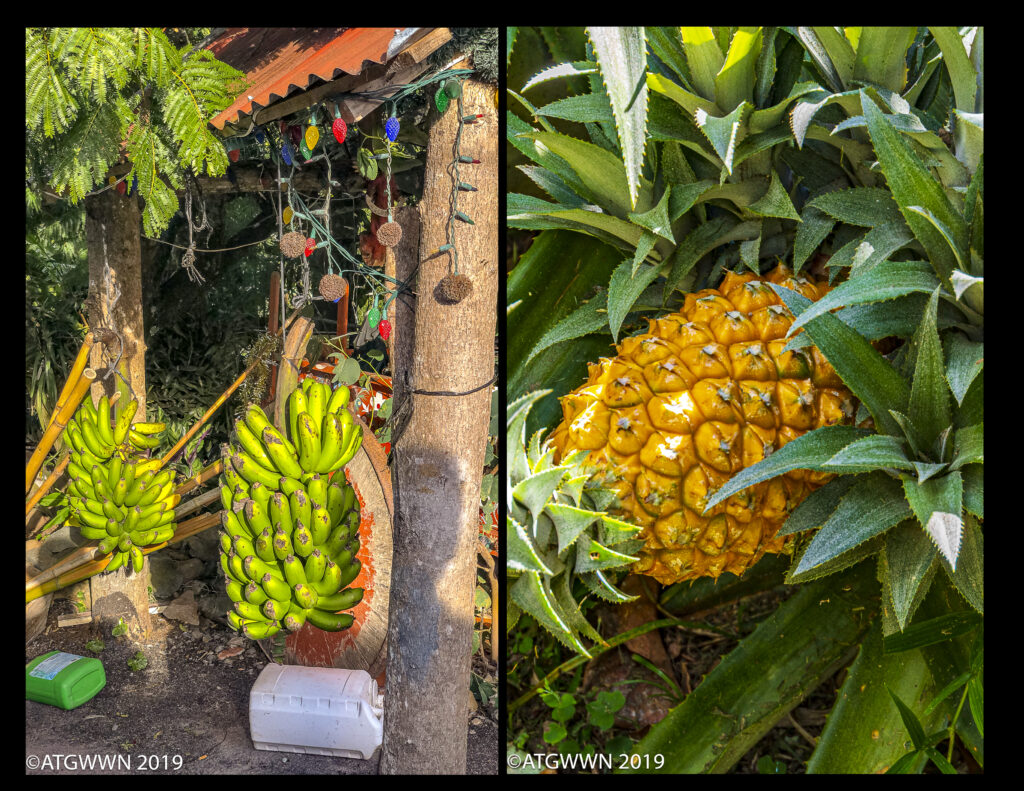
Really why do any of us garden? We have a patch of land, and we want to improve it, rearrange it, grow food, attract butterflies, birds, and bees. We want a tree for shade, or fruit, nuts, and flowers. We know the plants will create oxygen, influence cooler temperatures, and beauty. Gardens nurture us, and we grow alongside our plants.
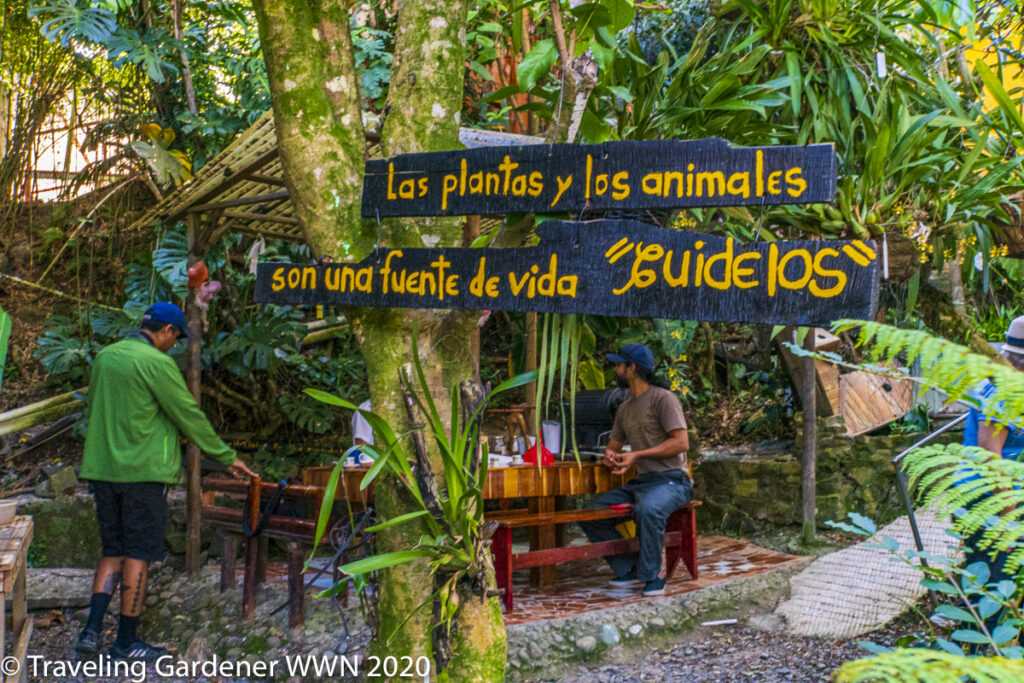
This humble garden is a seed integral to the environmental impact of the area. Grace Navarro understands the power of a garden and grows plants for food and the support of her family on her small two hectares of ground. Her efforts are lifting the entire community and its environment with her garden. The sign in her garden reads, “Plants and Animals, They are the source of life.” This is the best reason to garden.
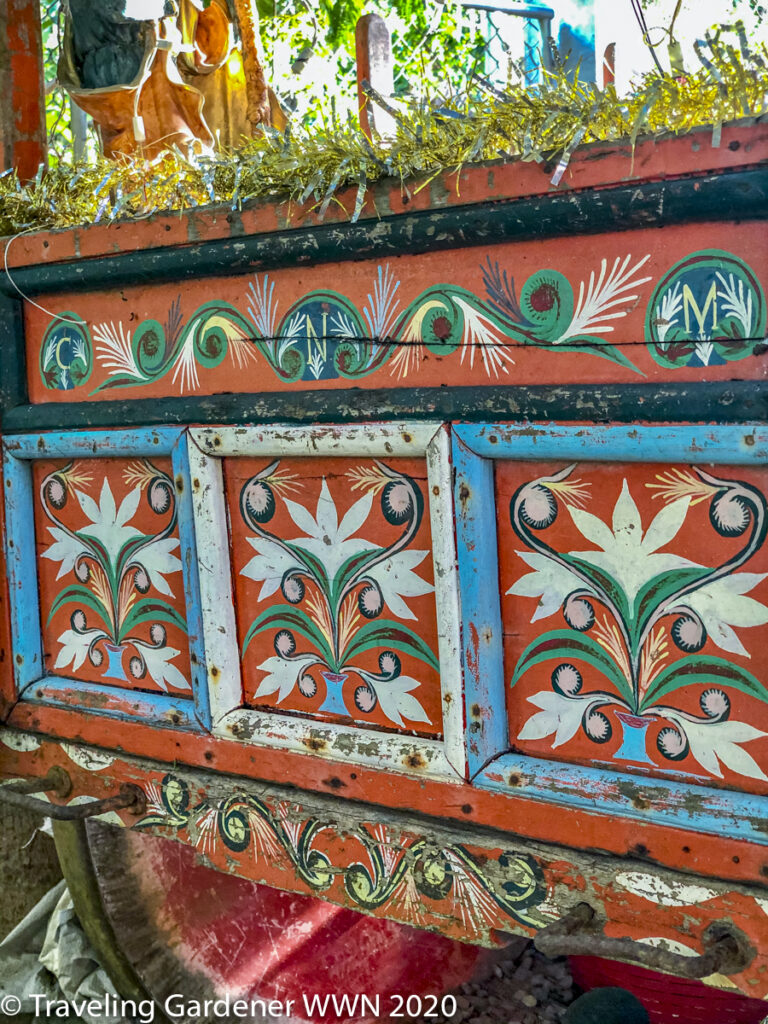
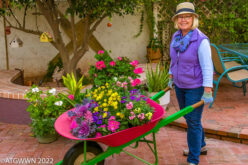
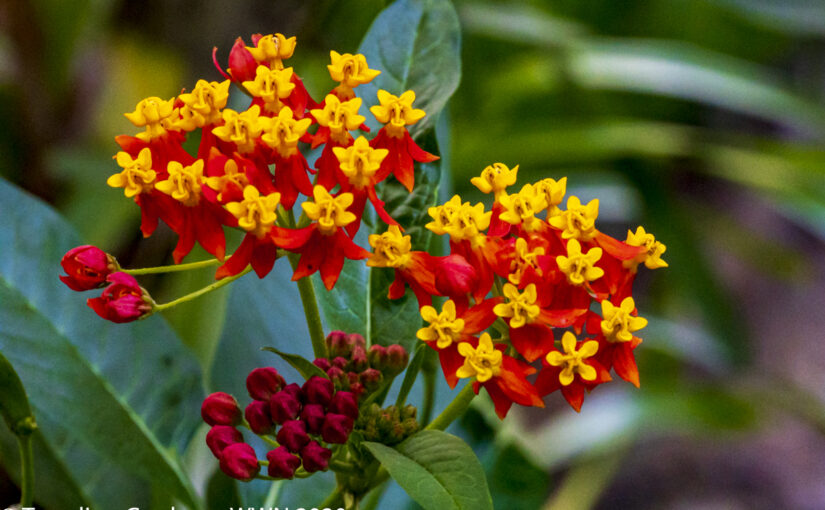
Yet another blog page BLOOMING with great stuff!
Thx Steve!
What vibrant illuminating colors in this Costa Rican garden!!
Thank you so much for sharing this beautiful environment..
So happy you enjoyed it.
I love the sentiments that Linda offers. Great stuff!
A wonderful article and great pictures depicting the garden.
Thank you
It’s quite a garden!
Linda, thanks for another wonderful garden tour through Grace Navarro’s garden. She speaks with her heart as she creates this womb blessing those she shares the fruits of her labors with. We love Costa Rica.
Yes indeed, Grace is making a difference.
I loved your story of Grace and her garden. If all people would embrace her attitude what a beautiful planet we would become. Thanks Linda for sharing her garden and her story.
So glad you enjoyed the story. I was so grateful to visit.
Such beautiful garden. It is an amazing how people are so creative. It is interesting to see how people live.
Thank you for sharing.
Another wonderful visit – thank you Linda for sharing this journey with us = a remarkable and inspiring lady , from whom we all have much to learn so as not to destroy our beautiful planet.
So glad you enjoyed it and yes Grace is making a difference. I think every garden can make a difference.
Beautiful I’ve always heard it was a great place to visit. Thanks
such great photographs!
I love Grace’s humble garden. Thanks for continuing to inspire other by sharing your beautiful garden tales!
Thx Linda, I was inspired by this garden and so glad I found it
Thank you for sharing this horticultural generosity- and more.
BTW I had no idea it takes 2 years for a pineapple to ripen. But then I learn something each month on your blog